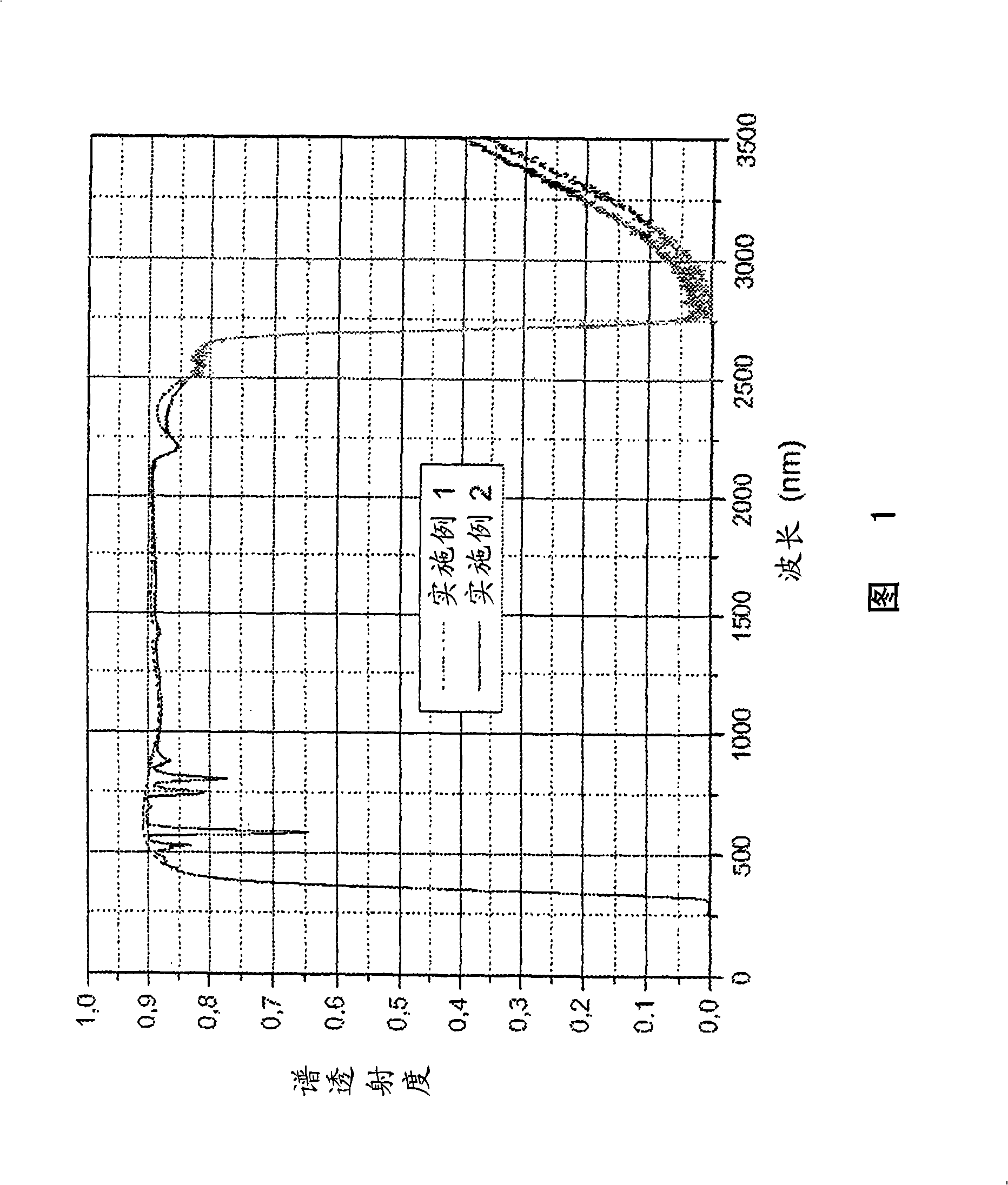Optically detectable, floatable, arsenic- and antimony-free, ceramisable lithium-aluminium-silicate glass
A lithium aluminosilicate, optical detection technology, applied in the field of glass ceramics, can solve problems such as unfavorable enhancement
- Summary
- Abstract
- Description
- Claims
- Application Information
AI Technical Summary
Problems solved by technology
Method used
Image
Examples
Embodiment 2
[0074] Example 20 shows the transmission spectrum of 4 mm thick pristine glass (Examples 1 and 2). In Example 2 of the present invention, a characteristic absorption band of Nd ions is particularly suitable for marking and recycling the float flat glass of the present invention.
Embodiment 19
[0079] Glass 2 in Table 1 was subjected to ion exchange in a sodium nitrate bath at 450°C for 22 hours to achieve chemical prestressing. The thickness of the compressive stress layer is 1 mm, and the polished sample is measured by the optical stress method before prestressing. The measured surface compressive stress is 7900 nm / cm, and the tensile stress inside the glass is 100 nm / cm. The thickness of the compressive stress zone on the surface is 320 μm. The flat glass of the present invention shows excellent chemical prestressing ability due to its high compressive stress value and excellent compressive stress layer thickness on the surface.
Embodiment 20
[0080] Example 20 shows a comparison of the transmission spectra of Glass 1 and Glass 2.
PUM
| Property | Measurement | Unit |
|---|---|---|
| Thickness | aaaaa | aaaaa |
| Surface compressive stress | aaaaa | aaaaa |
| Thickness | aaaaa | aaaaa |
Abstract
Description
Claims
Application Information
 Login to View More
Login to View More - R&D
- Intellectual Property
- Life Sciences
- Materials
- Tech Scout
- Unparalleled Data Quality
- Higher Quality Content
- 60% Fewer Hallucinations
Browse by: Latest US Patents, China's latest patents, Technical Efficacy Thesaurus, Application Domain, Technology Topic, Popular Technical Reports.
© 2025 PatSnap. All rights reserved.Legal|Privacy policy|Modern Slavery Act Transparency Statement|Sitemap|About US| Contact US: help@patsnap.com



